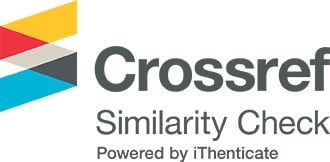Ảnh hưởng của việc bào chế Táo nhân (Semen Ziziphi Mauritianae) lên tác dụng an thần của vị thuốc trên thực nghiệm
Các tác giả
DOI: https://doi.org/10.59294/HIUJS.31.2024.674Từ khóa:
Táo nhân, phương pháp bào chế, mô hình sáng tối, chữ thập nâng cao, rotarodTóm tắt
Đặt vấn đề: Táo nhân (Semen Ziziphi mauritianae) có tác dụng dưỡng can, ninh tâm, an thần, liễm hãn, sinh tân. Hiện nay, hai phương pháp bào chế táo nhân được Bộ Y tế hướng dẫn là táo nhân sao đen và táo nhân sao (gọi là sao vàng). Nghiên cứu này giúp làm sáng tỏ ảnh hưởng của việc bào chế đến tác dụng an thần của táo nhân, cung cấp cơ sở cho việc sử dụng táo nhân trên lâm sàng. Mục tiêu nghiên cứu: Đánh giá ảnh hưởng của phương pháp bào chế đến tác dụng an thần của táo nhân. Đối tượng và phương pháp nghiên cứu: Tác dụng an thần của các dạng bào chế táo nhân trên chuột được đánh giá bằng mô hình sáng tối, chữ thập nâng cao và rotarod. Kết quả: Táo nhân sao đen, liều uống 3.6 g dược liệu/kg, thể hiện tác dụng an thần trên mô hình hai ngăn sáng tối, chữ thập nâng cao và rotarod. Táo nhân sống hoặc sao vàng không thể hiện tác dụng an thần trên 3 mô hình này. Kết luận: Phương pháp bào chế có ảnh hưởng đáng kể đến tác dụng an thần của táo nhân.
Abstract
Background: Semen Ziziphi mauritianae (ZMS) provides benefits such as nourishing the liver, calming the heart and mind, reducing sweating, and promoting the body's fluid production. It is primarily used to treat nervousness and insomnia. Currently, the Ministry of Health has provided guidelines for two specific processing methods of ZMS: Stir-fried ZMS and stir-fried ZMS until charred. This study focuses on clarifying the effect of these processing methods on the sedative effects of ZMS, providing a basis for its clinical use. Objectives: This study aims to evaluate the impact of processing methods on the sedative effects of ZMS in experiments. Material and method: The sedative effects of ZMS in three preparation forms (raw, stir-fried, and stir-fried until charred) were assessed using the light-dark box, elevated plus maze, and rotarod test in mice. Results: The water extract of stir-fried ZMS until charred, at an oral dose of 3.6 g/kg, exhibited sedative effects in the light-dark box, elevated plus maze, and rotarod test. The water extract of raw ZMS or stir-fried ZMS did not show sedative effects in these experimental models. Conclusion: The processing methods significantly affect the sedative effects of Semen Ziziphi mauritianae.
Tài liệu tham khảo
[1] M. Hirshkowitz, K. Whiton, S.M. Albert, et al., “National sleep foundation's sleep time duration recommendations: Methodology and results summary,” Sleep Health, vol. 1, no. 1, pp. 40-43, 2015.
DOI: https://doi.org/10.1016/j.sleh.2014.12.010[2] CDC, “FastStats: Sleep in Adults.” [Online]. Availabe: https://www.cdc.gov/sleep/data-and-statistics/Adults.html. [Accessed: May 30, 2024].
[3] C.A. Espie, R. Emsley, S.D. Kyle, et al., “Effect of digital cognitive behavioral therapy for insomnia on health, psychological well-being, and sleep-related quality of life: A randomized clinical trial,” JAMA Psychiatry, vol. 76, no. 1, pp. 21-30, 2019.
DOI: https://doi.org/10.1001/jamapsychiatry.2018.2745[4] H.H. Oanh and N.T. Triết, Thuốc Y học cổ truyền. Thành phố Hồ Chí Minh: NXB Y học, 2021.
[5] Bộ Y tế, Dược Điển Việt Nam V – Tập 2. Hà Nội: NXB Y học, 2017.
[6] N.P. Dung, Chế biến dược liệu. Thành phố Hồ Chí Minh: NXB Y học, 2020.
[7] Y.D. Jiang and Y.S. Tong, Zhongyao paozhixue cidian. Shanghai: Shanghai Scientific and Technical Publishers, 2000.
[8] Bộ Y tế, Thông tư số 30/2017/TT-BYT ngày 11 tháng 07 năm 2017 về Hướng dẫn phương pháp chế biến các vị thuốc cổ truyền, 2017.
[9] Viện Dược Liệu, Phương pháp nghiên cứu tác dụng dược lý của thuốc từ dược thảo. Hà Nội: NXB Khoa học và Kỹ thuật, 2006.
[10] M. Bourin and M. Hascoet, “The mouse light/dark box test,” European Journal of Pharmacology, vol. 463, issues 1–3, pp. 55–65, 2003.
DOI: https://doi.org/10.1016/S0014-2999(03)01274-3[11] A.A. Walf and C.A. Frye, “The use of the elevated plus maze as an assay of anxiety-related behavior in rodents,” Nature Protocols, vol. 2, no. 2, pp. 322–328, 2007.
DOI: https://doi.org/10.1038/nprot.2007.44[12] N.W. Dunham and T.S. Miya, “A note on a simple apparatus for detecting neurological deficit in rats and mice,” Journal of the American Pharmaceutical Association, vol. 46, no. 3, pp. 208-209, 1957.
DOI: https://doi.org/10.1002/jps.3030460322[13] H. Shiotsuki, K. Yoshimi, Y. Shimo, et al., “A rotarod test for evaluation of motor skill learning,” J. Neurosci. Methods, vol. 189, no. 2, pp. 180-185, 2010.
DOI: https://doi.org/10.1016/j.jneumeth.2010.03.026Tải xuống
Tải xuống: 230











